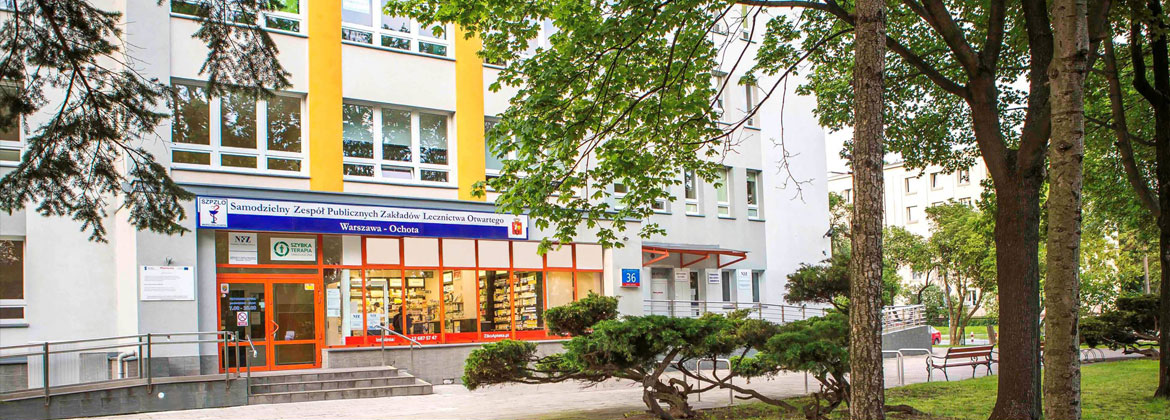

The Independent Group of Public Ambulatory Care Institutions Warsaw-Ochota
Endoscopic examinations
GASTROSCOPYThe examination we offer requires your consent. To facilitate the process of making the right decision, here you will find some information about the preparation for the examination, its course and possible consequences, as well as its role in the diagnosis of gastrointestinal diseases. In case of any doubt, ask the doctor who performs the examination your questions.
What is gastroscopy and what is the course of the study
Before starting the examination, your throat will be anesthetized with a spray medicine. This will reduce the discomfort associated with the insertion of the endoscope. The test will be performed in a lying position on the left side. At the beginning, you will be asked to bend your head and gently tighten your teeth on the mouthpiece, through which the endoscope will be inserted. The endoscope itself (a gastroscope) is a thin, flexible and smooth instrument with a diameter of approx. 1.0 cm. Thanks to a strong bulb, a special optical system and a miniature camera installed in the endoscope, it is possible to clearly visualize the internal surface of the upper gastrointestinal tract (esophagus, stomach, duodenum). Due to the fact that during the examination a small amount of air is injected into the stomach, bloating and belching can occur. These are normal phenomena that disappear soon after the completion of the examination. During gastroscopy, there may be a need of taking samples of the gastrointestinal tract for microscopic examination in the case of gastric ulcers, polyps or other lesions, which is critical to the choice of subsequent treatment or identification of frequent infection with the gastrointestinal pathogen Helicobacter pylori. Taking such samples is painless.
The examination time varies individually and on average is about 15 minutes.
Preparation for the test
At the time of registration, you will receive instructions on how to prepare for the test. We are asking you to strictly follow the instructions contained in this manual, this is one of the conditions for the success of the study.
Possible complications
During gastroscopy, despite strict observance of all rules and regulations, there may be some rare complications as:
- perforation (perforation) of the esophagus, pneumothorax and mediastinitis;
- perforation of the stomach or duodenum, peritonitis;
- gastrointestinal haemorrhage;
- syncope during reflex procedure, other complications of the cardiovascular system
- vascular and respiratory (e.g., cardiorespiratory failure);
- the possibility of vomiting and aspiration of stomach contents, which may result in aspiration pneumonia;
- although all procedures are performed with disposable equipment or equipment subjected to disinfection and / or sterilization in each case, the possibility of infection with hepatitis viruses (including HBV and HCV) or other microorganisms cannot be completely ruled out;
- some of the above complications may require operational opening of the abdominal cavity or chest, blood and plasma transfusion as well as intensive cardiopulmonary resuscitation;
- sometimes there may occur unpredictable complications, for example, an allergic reaction to an anesthetic or disinfectants (from skin rash, itching, to anaphylactic shock);
- some of these complications are serious and they can, exceptionally rarely, end in death.
After the test
You should immediately report any vague symptoms to your nurse or doctor. We ask you to eat nothing and drink for at least 60 minutes after the test and avoid hot meals and liquids for two hours. If the test was performed under general anesthesia, the recommendation to avoid meals and liquids may take longer, as advised by the anesthetist.
* The presence of a third party (accompanying) is required.
Price of the examination
|
Gastroscopy |
180,00 zł |
| Anesthesia for gastoroscopy |
200,00 zł |
Preparation for gastroscopy (Przygotowanie do gastroskopii)































